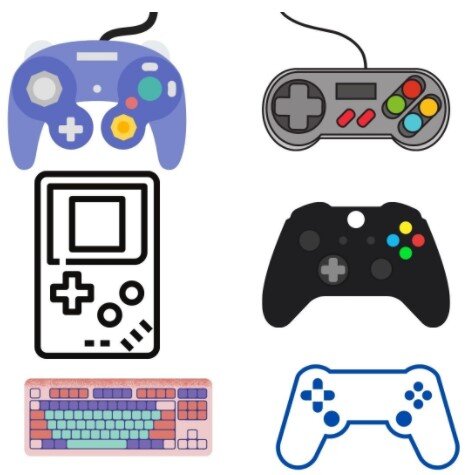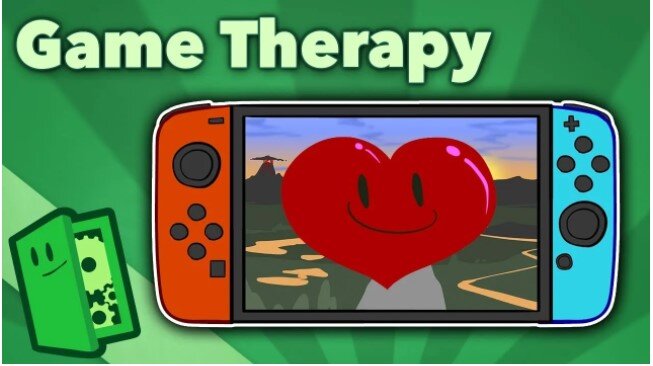The Importance of Video Games
Video games have been given a bad reputation. Many people think that video games are antisocial and mind-numbing. However, researchers have actually found that the opposite is true. Research shows that video games can create a more interactive social environment and can improve learning. One way that children learn, grow, and express themselves is through play. Video games allow children to immerse themselves in a new world, adapt to different realities, and build skills at their own pace. Play helps children (and adults!) learn important life skills like problem solving, coordination, and social skills.
Successful video gaming is dependent on remembering the controls, rules, quests, and story of the game and gaming system. Recalling all of that information every time players start up the game helps improve their overall memory over time. Navigating the virtual world and participating in quests demands a lot of attention and coordination. Video games create virtual realities that involve detailed and complex audio and visual stimuli. Unlike watching TV, where people passively take in the stimuli, video games require the players to move and interact with these stimuli as they change throughout the game. People who play video games have varying degrees of fine motor skills (controlling the use of small muscles like the ones in your hands). For some, complex controls can be no sweat; but for others, controlling a camera during play can feel like climbing a mountain. Additionally, using keyboard controls for computer gaming requires different coordination skills than using a handheld controller for PlayStation- or Xbox-type games. Each controller requires you to use your finger and hand muscles slightly differently, which work different muscles and can improve the player’s fine motor skills.
While navigating through the game, the player needs to be engaged and focused on the task at hand. Players must monitor various aspects of the game during play, such as their character’s and enemies’ health, and their location on the map in relation to where they have been and where they need to go. Monitoring and interacting with others in the virtual world is a great way to improve on multitasking and attention to detail, as the virtual world is constantly changing and new problems must be overcome. Players take in various stimuli to make split-second decisions. This fast paced environment trains the player to react quickly and accurately to each new situation in order to advance in the game.
Problem-solving is a major component of all games, not just video games. Each game has its own sets of challenges and quests that the player needs to pass for each new achievement. As the game progresses and gets harder, the player must use more effort to succeed. Stimulating game play and rewards for progress drives the player to continue solving the puzzles necessary to complete the quests and, eventually, the game.
Another valuable thing that video games teach us is how to anticipate success and how to deal with failure. Video games are challenging, which only makes them more rewarding. Persistence is the name of the game when faced with failure, and is a vital skill that video games allow players to build when faced with that failure. Instead of quitting the game altogether when their avatar dies or they fail a quest, players often continue trying to succeed. They are determined to find a better way to complete the mission. This is in contrast to learning in a classroom, where oftentimes the grade the student gets on an assignment is the final decision, with no room for a do-over.
Classic games and video games also have a social and community aspect that builds on the player’s social and teamwork skills. There are many different types of video games, ranging from single player to multiplayer, to massively multiplayer online (MMO) games. No matter how many people are in the actual game at the time of play, there are websites, streams, and message boards that players can use to interact with others in the gaming community. Multiplayer and MMO games typically require the most direct social interaction, especially for collaborative quests. In some games, players form guilds or teams that allow them to work together to complete quests and bond over shared experiences. When people engage in role-playing games, they need to understand the context of the virtual world and interact in an appropriate social manner for the specific world and character. Game play can often engage players in such a way that they don’t realize they are building valuable skills that will also help them in real life — they think they are just having fun!
Games and role-playing have been found to be so beneficial that child therapists have long since been using play as a therapeutic tool for children who suffer from developmental and mood disorders. Akili Labs is a gaming company that strives to create a fun learning experience for children. They have created a game called EndeavorRx geared towards improving the attentiveness of children aged 8-12, specifically for children with attention deficits. This video game has been approved by the U.S Food and Drug Admiration (FDA) as a long-term, non-drug alternative treatment for ADHD (Attention-Deficit/Hyperactivity Disorder). This game improves a player’s ability to resist distractions in everyday life, which is a skill that is crucial for daily functioning and good performance in school, and is typically lacking in children with ADHD. EndeavorRx was designed to target inattention by rewarding the player for paying close attention to their main goal and dodging the obstacles distracting them.
People with ADHD are more likely to be gamers because games are able to hold their attention. Short bursts of attention (that people with ADHD often have) get rewarded with achievements in video games. Minecraft is another great outlet for people with autism or ADHD; it allows the players to get creative while encouraging communication and cooperation. Minecraft’s calming environment provides a perfect atmosphere for developing skills like goal-setting, flexibility, communication, and self-control.
Another condition that gaming can help is Autism Spectrum Disorder (ASD). ASD is a condition that affects the way a person interacts with their environment, such as having difficulties learning or communicating. Nowadays, video games are one of the best ways to help children with ASD learn valuable skills that they may struggle with every day, like social cues. MMOs like Mincraft or World of Warcraft require players to interact in the society of the game and can require interaction with other players as well. In these games, children can learn to interact directly with others who have a shared interest or goal, which can be easier for them to do online than in a traditional setting. Some MMOs have a server that is dedicated to people with ASD, where people can have a safe space to be themselves while learning the game and interacting with like-minded people.
Additionally, people with ASD may struggle with solving problems and handling frustration. Games provide an avenue for them to think of solutions and try out different ideas to complete the task. It forces the player to confront their errors and frustration when things don’t work out. These core game elements create a safe environment for people with ASD to develop their skills, become comfortable with failing, and learn from their mistakes. People on the spectrum can also have difficulty with fine and gross motor coordination. Video games can provide a fun, interactive way to work on their motor skills while still having an enjoyable experience. In the age of technology, video games are a useful tool for staying motivated and interested in learning!
Educators realized that video games could also be helpful in the classroom and some have started to ‘gamify’ their lessons. Gamification is when gaming components like competition and rewards are combined with education to create a more interactive and engaging learning experience. One way to do this is to adopt a reward system of points or badges for completing educational tasks, with the goal of leading students to be more motivated and interactive. Virtual worlds can help learners connect abstract concepts to the real world through play. For example, students can learn math by playing as an architect designing buildings. Video games that immerse the player in a virtual reality similar to real-world environments can be used to teach students to think like doctors, lawyers, surgeons, or other important careers. Bringing play and video games into the classroom can motivate students to learn and think differently about the world ahead, fostering a new, smarter generation.
In summary, gaming has many benefits ranging from improving social skills, to problem-solving, to building fine motor skills. Video games can help people with ADHD focus on a given task while filtering out distracting stimuli. Those with ASD can also benefit from video games by learning how to interact with others in a virtual environment and troubleshoot quests. Educators are also seeing the benefits of gaming in the classroom. Video games can make concepts easier to understand by connecting difficult educational subjects to real-world applications. Additionally, they can motivate students to learn and interact with classmates. Video games no longer deserve the reputation of being called antisocial and mind-numbing.
Disclaimer: Consult a doctor if you are concerned about experiencing any of the described symptoms in this article and/or are interested in using video gaming as a therapeutic tool. Each person who is diagnosed with ADHD or ASD may experience varying symptoms with different levels of severity. The benefits of gaming described in this article may vary depending on the individual.
References:
ADDitude Editors (Ed.). (2021, May 7). Play therapy techniques and games to try at home. ADDitude. https://www.additudemag.com/fun-games-help-adhd-children-learn-from-play/.
Frisell, C. (n.d.). Autism awareness Month: Are video games good for Kids affected by Autism? The Power of Play. https://tocaboca.com/magazine/autism-video-games/.
Leigh, K. (2018, June 28). This is why video games are the future of education. Gamer Sensei. https://blog.gamersensei.com/article/gaming-and-education/.
Marklin, B. (2014, November 19). The benefits of video games in education. Learning Liftoff. https://www.learningliftoff.com/the-benefits-of-video-games-in-education/.
North, J. (2020, August 6). Games for ADHD: Video games that improve concentration. NewLifeOutlookADHD. https://adhd.newlifeoutlook.com/games-for-adhd/.
Shaffer, D. W., Squire, K. R., Halverson, R., & Gee, J. P. (2005). Video games and the future of learning. Phi Delta Kappan, 87(2), 105–111. https://doi.org/10.1177/003172170508700205
Tony. (2019, August 9). Autism and video games: A clever combination. Digital Games Hub. https://digitalgameshub.com/autism-and-video-games/.
Wiley. (2020, December 18). Educational benefits of video games. Educational Benefits of Video Games. https://blog.advancementcourses.com/articles/educational-benefits-video-games/.










